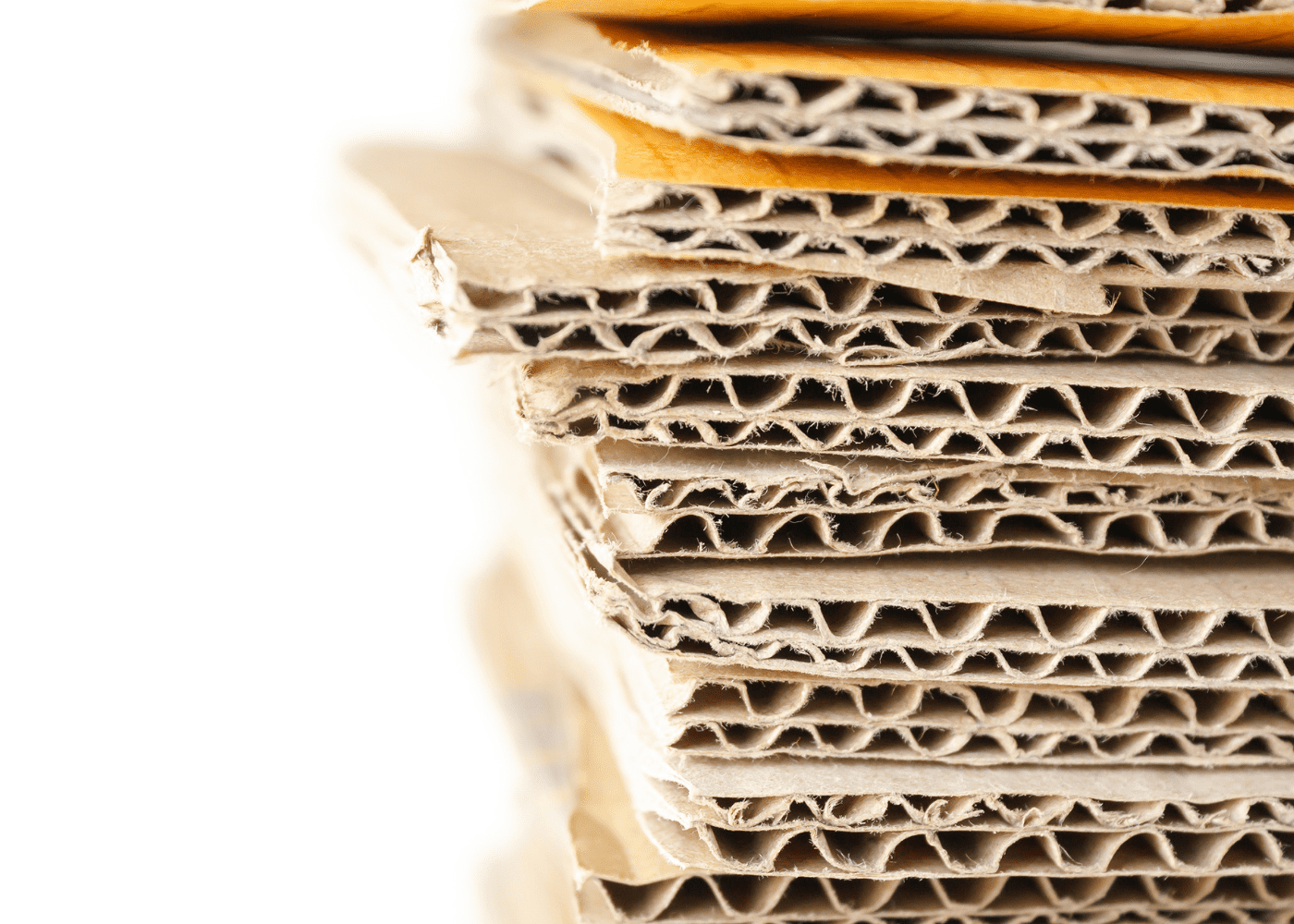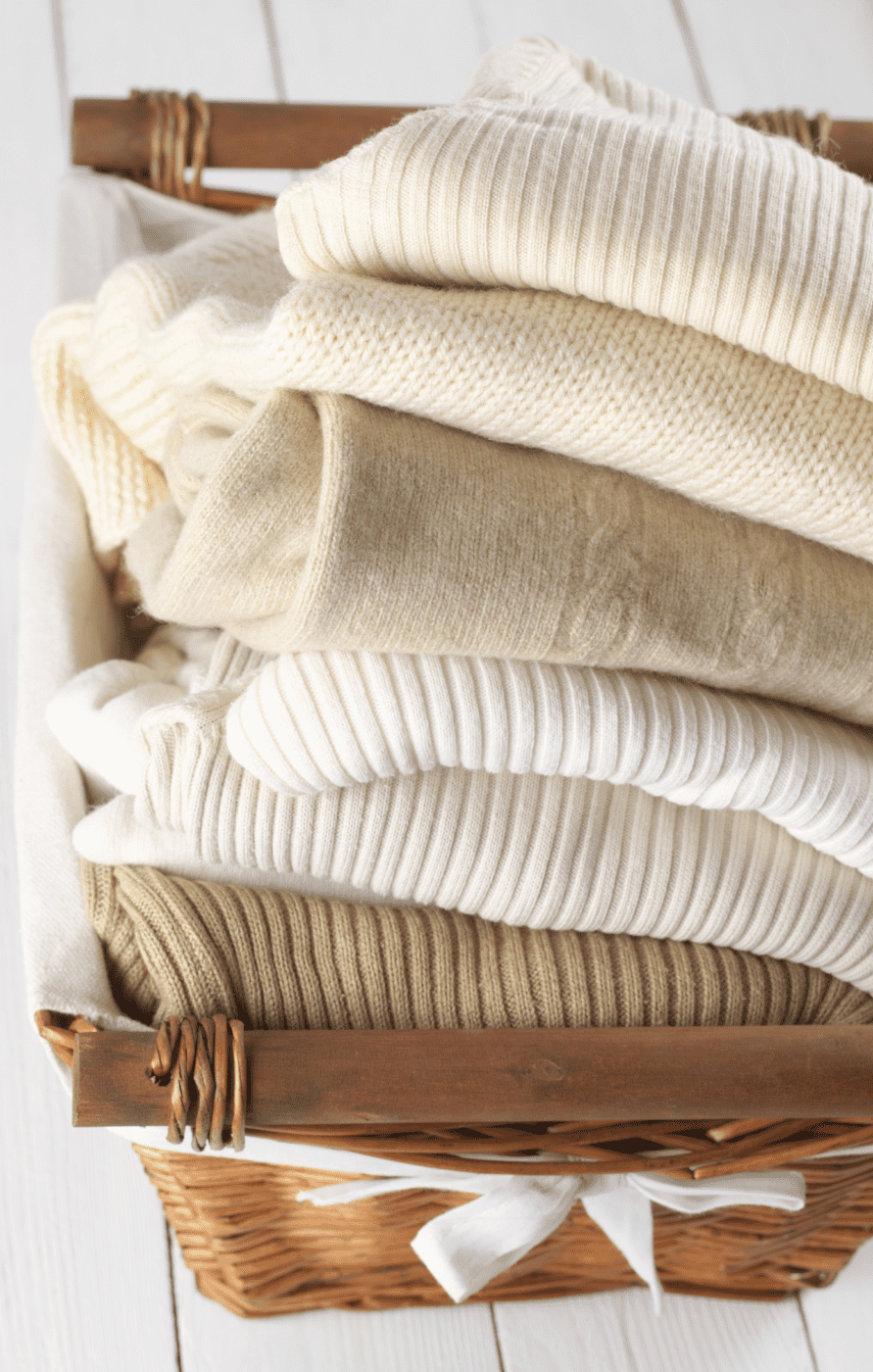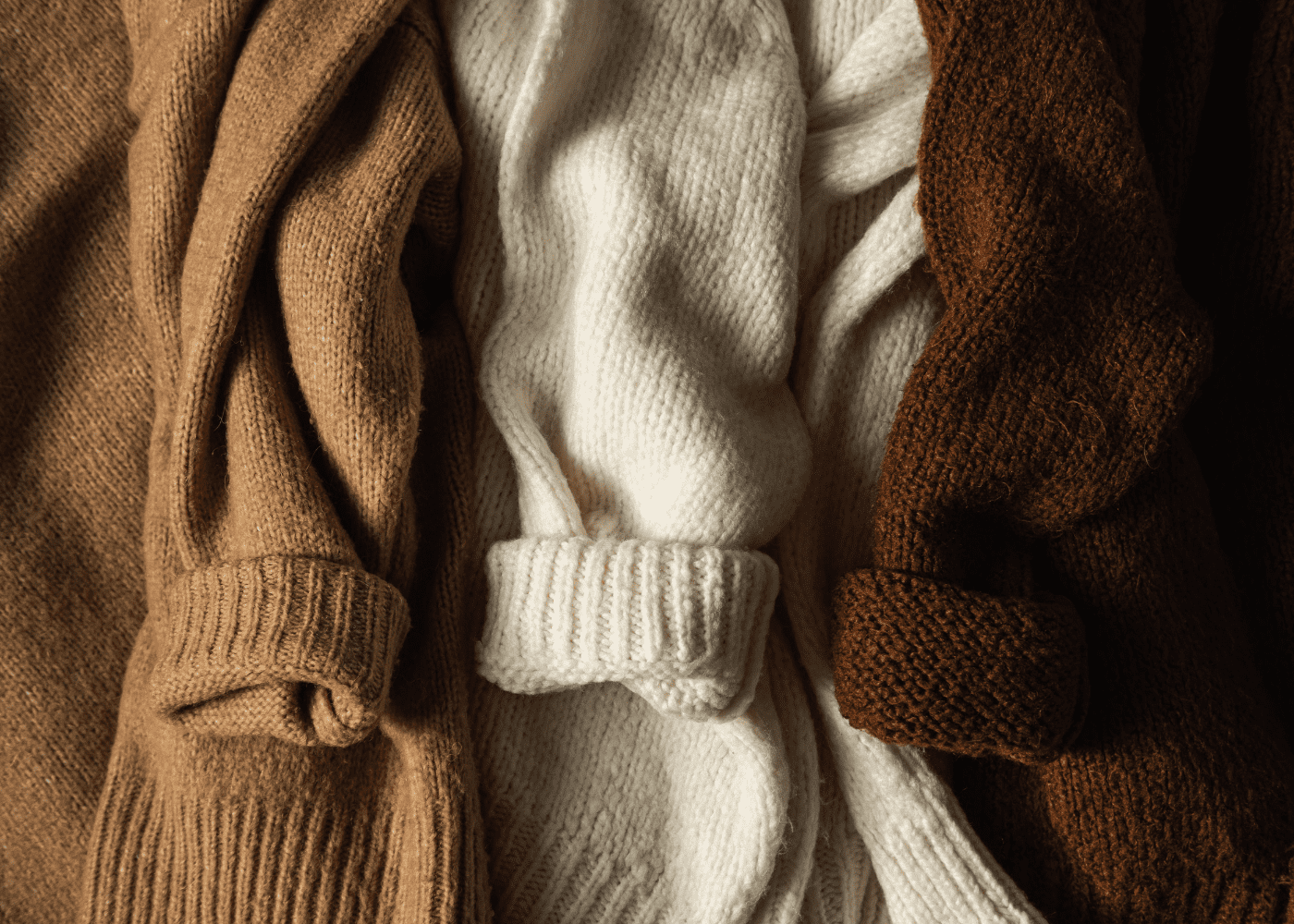Whether you’re dealing with cashmere, wool, or synthetic materials, there are certain steps you can take to keep your sweaters looking great season after season.
In this blog post, we’ll explore how to store sweaters in a way that avoids stretching, pilling, and other common issues. With these tips, you can be sure that your favorite sweaters will be ready to wear whenever the temperature drops.
Sweater storage: The best way to store
Luckily, it doesn’t take much time or effort to store sweaters correctly, but there are several big mistakes that people make when storing clothes if they aren’t careful – and those things can ruin an expensive sweater! For that reason, we’re going to go over everything you need to know about safely storing sweaters so your favorite pieces will be ready when you want them again next year.
Learn how to fold sweaters with the Marie Kondo folding method in this short video by Lavendaire. Marie Kondo is a professional organizer with tons of organizing tips. See her website here!
For more home organization tips, check out this post: Home organization ideas: 3 Tips for an organized home
How to store sweaters to prevent stretching and moths: 3 top ways to store sweaters
This is especially important during the summer months when you are packing away your sweaters for the season. It’s important to store off-season clothes with care.
Here are the three best methods for storing your sweaters to prevent them from being ruined or stretched out:
Fold sweaters
A neat fold is a great way to store your sweaters to preserve their shape. First, lay the sweater face down with the neckline towards you. Simply fold both sides of the sweater’s body in half lengthwise. Fold the sleeves in neatly on the same line. Then, fold the sweater in thirds, folding it downwards. Watch the video above to see how!
If you only have a few sweaters, try storing them in a dresser drawer once they’re folded neatly. For lighter sweaters, you could also keep things organized with shelf dividers.
Hang sweaters
Hanging sweaters is another simple method of storage that works especially well with longer sweaters or delicate knits. I also hang any sweaters with collars to prevent them from getting wrinkled. You can get a hanging sweater organizer online, too.
Be careful with heavy sweaters and delicate thinner sweaters, though, as hanging them incorrectly may cause unwanted stretching. Padded hangers may help with this! Wire hangers can also cause creases, so for high-end items like cashmere sweaters, opt for better quality hangers or folding.
Always wash before storing
According to Martha Stewart, washing your clothes before storage will prevent moths and pests from growing and eating holes in your clothing. If your garments are clean, the pests can’t breed.
Before you pack up winter clothing for storage, wash or dry-clean garments that have been worn. This rids them of moth and beetle eggs and also eliminates perspiration remnants and food spills, which attract and nourish pests. Moths and beetles don’t eat items made of synthetic or cotton fabrics, but you should clean those, too, if you store them with woolens.
The Basics of Mothproofing, by Martha Stewart

Fold your sweaters and use cardboard to keep them flat
I wouldn’t worry about this for short-term storage, but if you’re worried about creasing during long-term storage while in a garment bag or box, stack them with cardboard between each layer. This will prevent the layers from shifting around and getting wrinkled or stretched out.
You can also use the hanger of a wire hanger to keep the shape of your sweater intact if you’re using a wardrobe box with a hanger bar (like these). Just slip the wire part of the hanger over your folded sweater before placing it in its storage container, then remove it once you’re ready to wear it again.

Use cedar to repel moths and other pests
Cedar is a natural insect repellent. It can help prevent pests from getting into your sweater, and keep bugs from eating it. Read more about the science behind using cedar as a moth repellant here.
Cedar chips can also repel mildew and mold, which can cause damage to your sweaters if left unchecked. The wood has an aromatic scent that will make your closet smell amazing! Plus, since cedar naturally absorbs moisture from the air, it’s a great way to keep your closet dry (and therefore less likely to develop mold or mildew).
To use cedar to repel pests, place sachets of cedar wood chips in your closet. You will either need to replace them every few months (when they lose their scent) or maintain the scent by adding cedar essential oils to the chips. Lots of companies sell cedar products, like a cedar chest, under the guise that they will repel pests, but without the aroma the benefit is null.
Be careful not to get oils from the chips or the essential oils on your clothes, though, as it will stain them.
Only store clean sweaters & Clean your closet frequently
It’s so important I’m saying it twice. Always clean your sweaters before storing them to prevent pests (like moths) from breeding. Storing a dirty sweater may also attract pests if there is food residue on it, or will create mold.
Make sure that you let them dry completely before putting them away, as a moist environment can lead to must and mildew. If you’re unsure of how to clean them, check the tags and take your sweaters to a dry cleaners if necessary.
And, store your sweaters in a dry, cool, clean place as well. Vacuum frequently if you have carpets and, if you can, store your dirty laundry away from your closet if you’re especially worried about pests.

Store bulky sweaters in a basket or woven hamper
Another option for storing bulkier sweaters is to use a basket, mesh hamper, or other woven containers for storage. These are great for storing delicate items and bulky items alike.
Baskets can be stacked on top of your closet or lined up in rows and columns on shelves like bookshelves if you’re limited on shelf space— you just need to make sure that the basket is deep enough to accommodate your sweater’s length. And, if storing delicate sweaters, find one with a lining so the wicker doesn’t get snagged.
How to store sweaters in canvas, mesh, or linen garment bags
Canvas, mesh, and linen are all breathable materials that are lightweight and durable. They’re also inexpensive to buy and easy to maintain by washing. I use these Amazon storage bags and have loved them so far.
If you need more long-term sweater storage options, you may want to opt for an airtight container or vacuum-sealed bags. Make sure you store them in a dry location free of pests.
The fabric keeps your sweaters clean without the need for plastic bags or big plastic containers. You can store them in one of these bags for many years without worrying about damage from dust particles or moths.

The bottom line: Your sweaters will last longer if you properly store them
There’s no point spending your hard-earned cash on nice clothing if you aren’t storing sweaters properly!
Let’s recap how to store sweaters correctly with simple sweater storage ideas:
- Store your clean sweaters in a cool and dry place.
- Use garment bags specifically designed for storing clothing items for long-term storage (there are quite a few options available on Amazon). If you don’t have any garment bags lying around, consider using plastic bins with lids instead.
- Use pest repellant (like cedar essential oils) in your closet to prevent moths and other pests.
- Fold or hang your garments to prevent wrinkles and stretching.
Resources
Here are some other posts that you may want to read:
- How to get detergent stains out of clothes
- How to get crayon stains out of clothes
- How to clean a sheepskin rug
References
The Scientific Reason Why Cedar Keeps Moths Away From Old Clothes, by Inverse
All things home organization
Simple home organization tips and tricks to keep your space looking tidy and feeling functional.


Leave a Reply